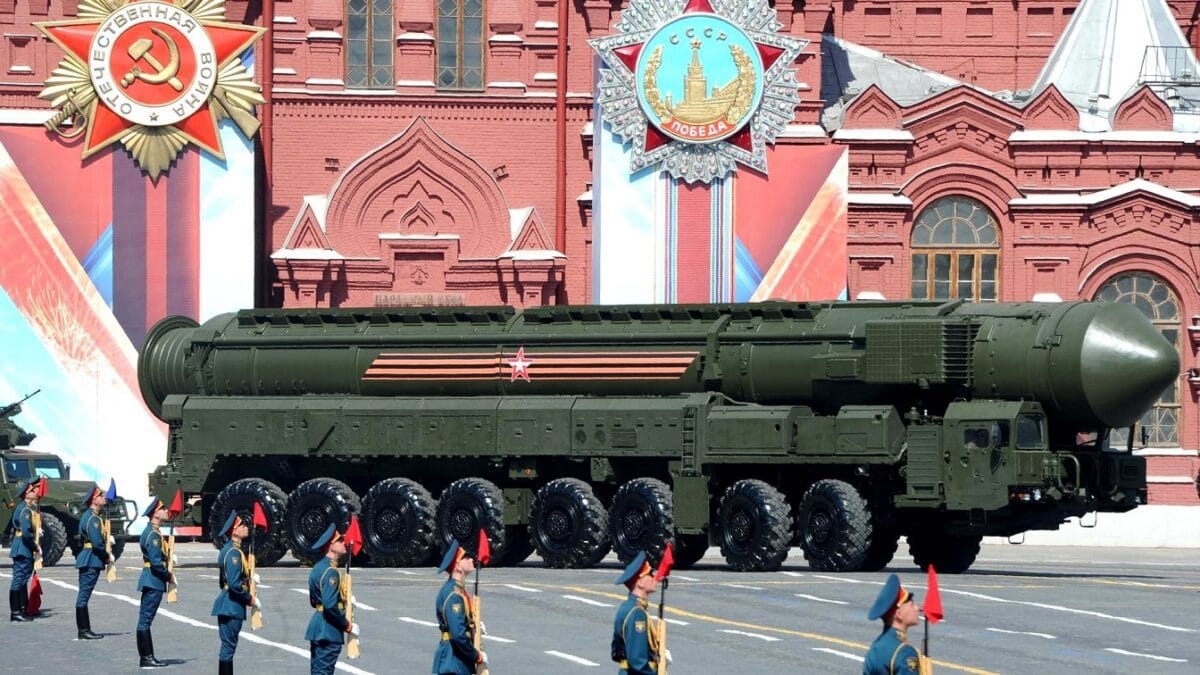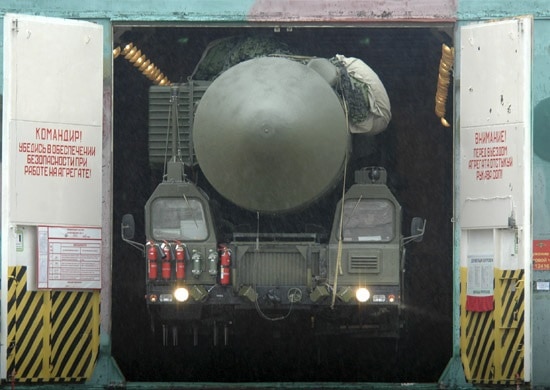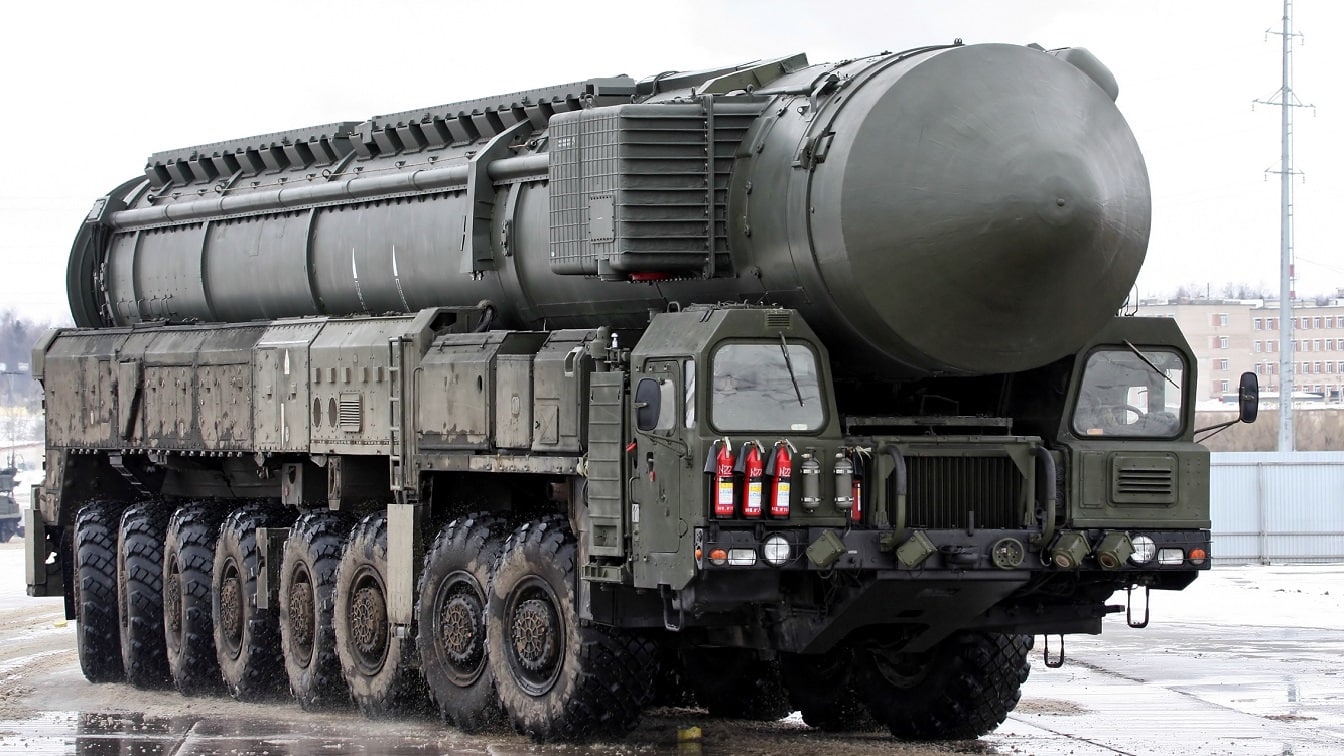Sarmat and Yars: How Russia Plans to Upgrade Its Nuclear Missile Forces – You see in the media multiple types of conventional war scenarios between Russia and Ukraine, so it is easy to forget that Russia has the latest nuclear-equipped intercontinental ballistic missiles (ICBM). These ICBMs back up anything Russia does militarily and are part of Vladimir Putin’s dream team of strategic weapons. The Kremlin continues to modernize its ICBMs. The fearsome RS-28 Sarmat is coming online and the increasingly lethal RS-24 Yars is already operational.
Could the Sarmat Be Better Than the Satan?
The RS-28 is designed to replace the SS-18 Satan, which is a silo-based and two-stage liquid-fueled ICBM dating back to the Soviet Union in 1988. The Satan mod-6 has ten Multiple Independent Reentry Vehicle (MIRVs) and a range of approximately 6,800 miles.
But the RS-28 Sarmat is the one to watch. This is also a super heavy, liquid-fueled, and MIRV-equipped ICBM that was planned to be tested at least twice last year. However, the first complete test launch of the silo-based missile has been postponed to 2022. The Russians hoped the Sarmat would be ready for service in 2021, so Putin may be getting antsy with the delays.
Expect More Delays With the Sarmat ICBM
The Russians have been working on the Sarmat at the Makeye Rocket Design Bureau since 2009. The first prototype emerged in 2015. Then the Russians focused on two successful silo-ejection tests in 2018 after having launch system troubles with the Sarmat in 2017. Russia anticipates that the Sarmat will be deployed with 20 different Strategic Rocket Force Regiments.
The Missile’s Specs Are Fearsome
The new missile weighs 208-tons. It boasts a payload that is nearly 10-tons, and it can be loaded with 178-tons of fuel. The MACH 10 Sarmat has a range of 11,000 miles and can fly dodgy and volatile routes enabling it to avoid missile defense zones. The missile can stream over the North and South Pole and even be targeted from directions that stymie interception efforts by missile defense systems.
The RS-24 Yars Is Ready
The RS-24 Yars can be both silo-based and road-mobile. This is an upgraded variant of the Topol-M ICBM, that comes complete with perhaps three and up to 10-independently targetable warheads, each armed with a 300-kiloton yield. The Russian strategic missile is solid-fueled with MIRV warheads.
While heavier than the Topol-M, the Yars can be transported by the same 16 x 16 wheeled chassis. The missile can be launched in seven minutes from the mobile system. It uses an advanced GLONASS digital inertial navigation system. Russia began to employ the Yars ICBM systems in 2009 or 2010 when the RS-24 launcher was sent to the Strategic Rocket Force Regiments.
The Russian road-mobile system has its advantages. They are more difficult to track and destroy. For example, in a doomsday scenario, let’s say Russian submarines are incapacitated, nuclear bombers are destroyed, and silo-based ICBMs are eliminated, then the road-mobile launcher becomes the last standby for Russia’s nuclear triad.

Russian ICBMs. Image Credit: Creative Commons.
Russia’s military has around 45 Topols, 60 Topol-Ms, and as many as 135-mobile Yars launchers. With Topols being retired, Russia’s ICBM modernization rate will be at least 80 percent, according to Putin, over the next decade. That means eight out of ten ICBMs will be of the modern variety.
What Is the Russian’s Nuclear Strategy?
The question from Western nuclear strategists is just how far Russia will go to escalate a nuclear confrontation. They could “escalate to de-escalate,” meaning stage a conventional military incursion into Ukraine and then show that road-mobile nuclear systems are on the go and ready to launch. They could also test-launch an ICBM. This nuclear activity could “freeze” the conflict in Ukraine in place and the Russians would hold Ukrainian territory with the nuclear-force threat backstop.
So, this would be escalating nuclear activity and then de-escalating when the holding of Ukrainian ground is secured. The West, seeking to mitigate the risk of a nuclear confrontation would then, to the Russian’s thinking, refrain from fighting back with conventional forces and rely on financial sanctions instead. The pressure would be on Ukraine’s conventional forces to execute a defense in depth without a U.S. or NATO military response.
Fortunately, American satellite imagery would be a factor in making sure the Russians do not do anything so surprising. But the modernization of Russia’s strategic nuclear forces is meant to send a message to the West that Moscow is serious about strategic weapons development.

Sarmat ICBM. Image Credit: Creative Commons.
I should make a distinction between nuclear activity – actions like testing and road-mobile movement – and actual use. The Russians have claimed that they will only use a nuclear weapon if attacked first by an enemy nuclear weapon or if the homeland is threatened catastrophically.
There Are Tactical Weapons Too
The Russians also have non-strategic battlefield or tactical nuclear weapons – an estimated 5,400 with 2,000 believed to be ready for combat. It is highly unlikely that these would be used in a Ukrainian conflict, but the capability is there.
Nonetheless, the Russians are definitely modernizing their strategic nuclear arsenal. The Sarmat and Yars are significant upgrades. This gives Putin options and confidence that he can deter NATO in Europe and keep the Americans guessing on just how far the Russians would go to escalate a potential nuclear confrontation.
Now serving as 1945’s Defense and National Security Editor, Brent M. Eastwood, PhD, is the author of Humans, Machines, and Data: Future Trends in Warfare. He is an Emerging Threats expert and former U.S. Army Infantry officer. You can follow him on Twitter @BMEastwood.

